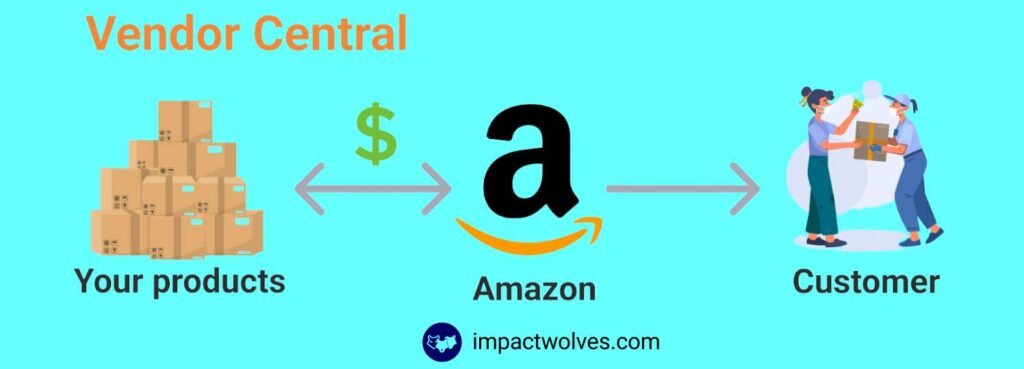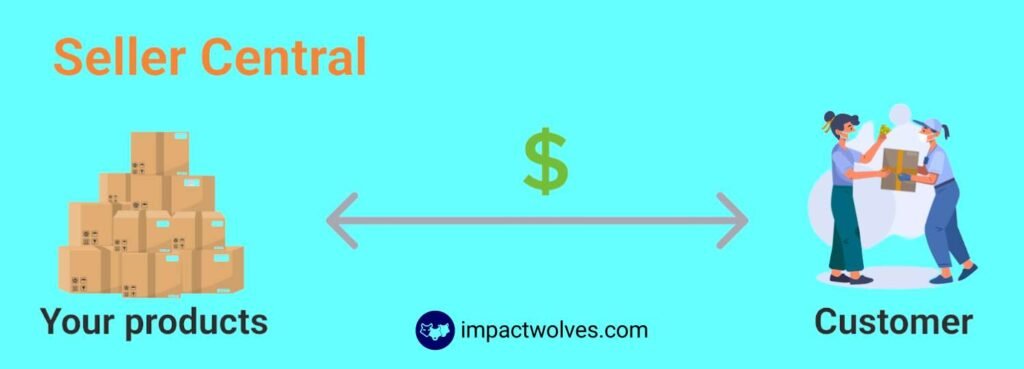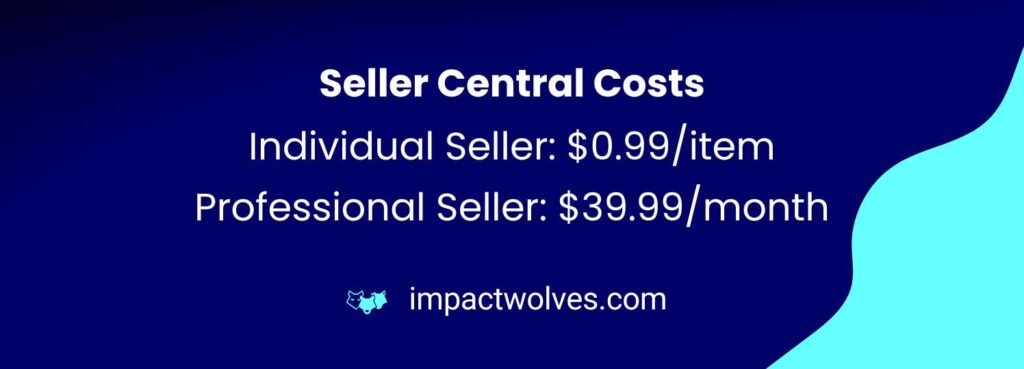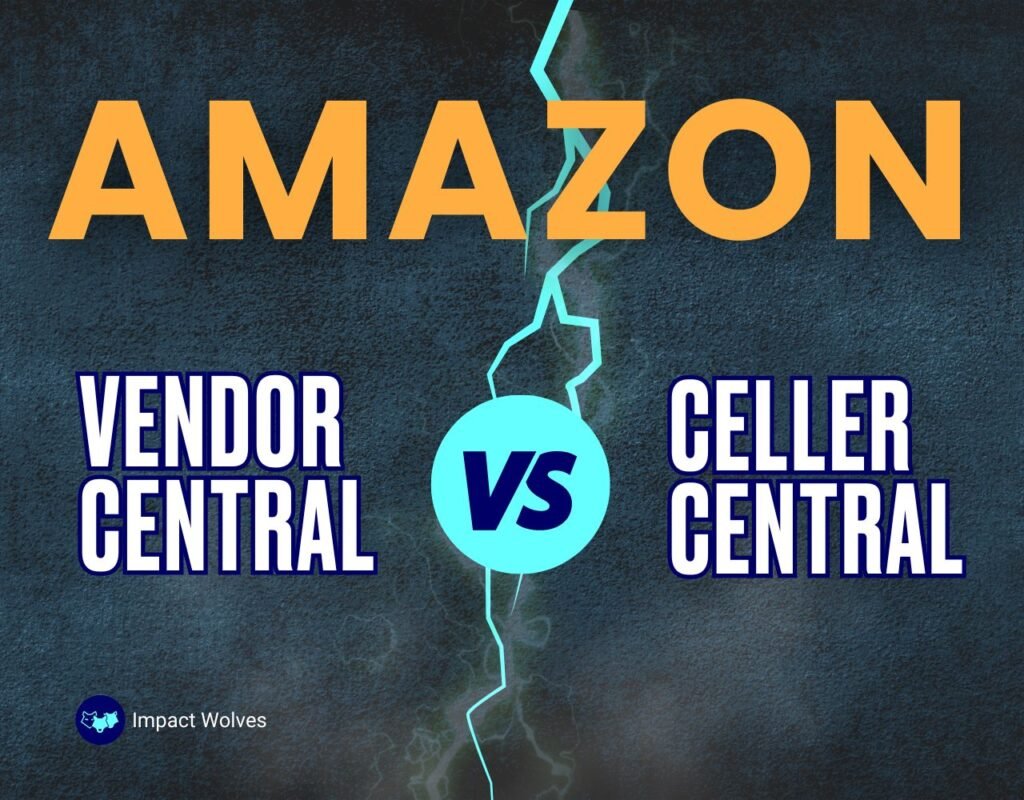Are you thinking of joining the Amazon seller crowd? It’s a great platform with almost 9.5 million sellers from around the world, catering to tons of customers! But before you jump in, there’s a question: Should you go for Seller Central or Vendor Central?
Seller Central puts you in the driver’s seat. You manage your listings, prices, and inventory. It’s the perfect choice if you like control and want to start small.
On the other hand, Vendor Central is more like a wholesale deal. Amazon buys your products in bulk and handles shipping. This works well for established brands with high sales volume.
So, which one should you go for?
In this article, we will break down Vendor Central vs Seller Central, showing you the key differences to pick the perfect fit for your awesome products and brand!
But before we get to the difference, let us have a look at what exactly is Vendor Central and Seller Central.
Amazon Vendor Central
If you’re looking to sell directly to Amazon, then Amazon Vendor Central is your program!
Here’s how it works:
- You sell your products in bulk to Amazon at a wholesale price
- And Amazon will then resell them on its platform.
It’s that simple!
This is a good fit if you want to work closely with Amazon and tap into their huge customer base and fast shipping. They even have marketing tools to help you sell more!
To put it simply:

Features of Amazon Vendor Central
- Wholesale Selling
You sell your products in bulk at wholesale prices directly to Amazon, not individual customers.
- Amazon Takes Over Fulfillment
Amazon handles storage, packaging, shipping, and customer service for the products you sell.
- Greater Control by Amazon
While you may provide some input on pricing and promotions, Amazon has more control over these aspects compared to Seller Central.
- Potential for Increased Sales
By getting your products directly on Amazon, you gain access to their massive customer base and potentially higher sales volume.
- Invitation Only
Vendor Central is an invitation-only program. Amazon typically invites established brands with a proven track record of high sales volume.
Amazon Seller Central
Amazon Seller Central is a program designed for businesses or sellers who want to sell their products directly to customers on Amazon.
- You create listings for your products and set your prices.
- You handle shipping and customer service yourself, which gives you more control over your business.
And even though almost 60% of sales on Amazon come from independent sellers on Seller Central, it also requires more work on your part!
In short, we can say that:

Features of Amazon Seller Central
- Listing and Pricing Products
You create listings for your products, including descriptions, images, and pricing. You have control over how your products are presented to potential buyers.
- Inventory Management
You track your stock levels and ensure you have enough products to fulfill orders. Seller Central provides tools to help you manage inventory and avoid stockouts.
- Order Fulfillment
You handle packaging, shipping, and customer service for the orders you receive. Or you could go for Amazon’s fulfillment service (FBA), like 73% of sellers, to take care of these aspects for a fee.
- Marketing and Promotions
Seller Central offers tools to promote your products on Amazon, such as running sponsored ads and creating deals.
- Business Analytics
You can track your sales performance, analyze customer behavior, and get insights to help you make informed business decisions.
Amazon Vendor Central Vs Seller Central: A Bird’s Eye View
| Features | Seller Central | Vendor Central |
| Who can join? | Anyone can join | Invite-only for established brands |
| Selling to? | Customers directly | Amazon in bulk |
| Pricing Control | You set your prices | Amazon sets the prices |
| Shipping and Fulfilment | You handle it or use FBA for it | Amazon handles it |
| Advertising Options | More ad options | Fewer ad options |
| Product Content | Basic product listings | Richer product content with A+ Content |
| Brand Control | Complete control | Limited Control |
Now that you know the main difference between both these programs, which one should you go for?
Amazon Seller Central Vs Vendor Central: Which One to Choose?
Whether you’re a new seller or an established one, the Seller Central Vs Vendor Central dilemma can be quite overwhelming.
To make it easier for you to make an informed decision, here are some pros and cons of both programs.
Amazon Vendor Central Pros
Let’s start with some upsides of going for Amazon Vendor Central:
- Bulk Orders Simplify Inventory Management
Instead of constantly restocking for individual customer orders, you deal with larger, bulk shipments to Amazon. This reduces the workload associated with managing inventory levels and frees you up to focus on production or other areas of your business.
- Direct Payments from Amazon
With Vendor Central, you don’t have to worry about collecting payments from individual customers. Amazon handles all transactions and sends you a single payment for the bulk order they purchased. This simplifies your accounting and cash flow management.
- Increased Visibility Through Amazon Advertising
Vendor Central often provides access to a wider range of Amazon’s advertising tools and opportunities. This can significantly boost your product visibility on the platform. Amazon has a vested interest in selling the products they buy from you, so they’re more likely to promote them through sponsored ads, deals, and placements on product pages.
- Access to Marketing Tools
Vendor Central gives you a jumpstart on sales with access to special promotions like Subscribe & Save and the exclusive Amazon Vine program. Vine sends your products to top reviewers before launch, generating valuable feedback and potentially boosting sales through positive reviews. It’s all about building trust with customers before they even hit “buy.”
- A+ Content
With Vendor Central you get access to A+ Content. This allows you to go beyond basic descriptions and include scannable text boxes, detailed product pages with more pictures and explanations, and comparison charts that show how your product stands out from the rest. By providing customers with all this extra information, you can help them make an informed decision and feel confident about buying your product.
Amazon Vendor Central Cons
Here are some reasons why Vendor Central can be a deal breaker:
- Limited Pricing Control
Unlike Seller Central, you won’t have complete control over your product’s price on Amazon. Their algorithms determine the pricing, which may not always match your ideal profit margin.
- Setup Process
Becoming a Vendor Central seller can involve a more complex setup process compared to Seller Central. This might include brand registration steps that require additional time and effort.
- Limited Customer Insights
When you’re using Vendor Central, it’s important to note that you won’t be able to receive customer feedback or reviews directly since you don’t sell to them directly. This can sometimes make it challenging to understand what your customers think about your product and make changes accordingly.
- Tracking Sales Data
Vendor Central sellers don’t have their dedicated seller account. This means tracking your sales data can be difficult compared to Seller Central, where you have a central dashboard with detailed sales information.
- Reduced Customer Relationship
Vendor Central sellers have less control over customer relationships. Unlike Seller Central where you can interact with customers directly, Amazon handles all customer service for Vendor Central products. This can limit your ability to build brand loyalty and address customer concerns directly.
Amazon Seller Central Pros
Here’s a breakdown of the key benefits you get with Seller Central:
- Be Your Boss
Control is king with Seller Central! You decide your product pricing, manage your listings, and oversee your inventory levels. This allows you to tailor your sales strategy and optimize your profit margins.
- Hear the Customer’s Voice
You can learn a lot from your customer’s feedback and reviews. With Seller Central, you can easily access these ratings and gain valuable insights into customer sentiment. This can help you identify areas for improvement and build trust with potential buyers.
- Sales at Your Fingertips
Seller Central provides built-in analytics that allows you to monitor your sales data, identify trends, and make informed decisions about your business. You’ll have a clear picture of what’s selling well and where you can optimize your listings or marketing efforts.
- Faster Start-Up
The Seller Central setup process is generally simpler compared to Vendor Central. There’s no brand registration required, so you can start selling sooner and begin generating revenue faster.
Amazon Seller Central Cons
While Seller Central offers flexibility, here are some cons to consider:
- Cost Considerations
There are fees associated with selling on Seller Central. This includes a monthly subscription fee and potentially per-item fees depending on your chosen fulfillment method.
Individual sellers have to pay $0.99/ item, while professional sellers have a monthly subscription of $39.99/month.

These fees can add up, especially for high-volume sellers.
- Huge Competition
As a smaller seller, you might face stiff competition from larger organizations with more resources for advertising and promotions. Seller Central requires more effort on your part to optimize your listings, run targeted ads, and create compelling marketing campaigns to grab customer attention.
So many features, multiple pros, and several cons! We’re sure all this must be stressing you out!
However, here’s something to make you feel better: You don’t have to get into the Vendor vs Seller Central battle; you can benefit from both programs!
How to Benefit from Vendor Central and Seller Central Simultaneously?
By going for Amazon Vendor Express!
What’s Vendor Express? It’s a third option for selling on Amazon!
While Seller Central and Vendor Central offer distinct approaches, Vendor Express might be a good fit for some businesses. It combines some aspects of both programs, potentially giving you more flexibility in how you sell on Amazon.
How to Get Started on Seller and Vendor Central?
Setting up your business on Amazon can be a little overwhelming, but don’t worry! There are two options available: Seller Central and Vendor Central.
If you’re just starting out, getting started with Seller Central is the easier option. You can quickly sign up and create your account on your own.
On the other hand, Vendor Central is an invitation-only platform. Amazon invites established businesses and big brands to set up their accounts under Vendor Central. However, if you’re feeling confident and ready to take your business to the next level, you can reach out to Amazon and request an invitation. They typically consider factors like your sales history and other requirements to determine eligibility.
So…
Vendor Central Vs Seller Central: Which One to Choose for Maximum Profits
Are you feeling a bit confused about the difference between Amazon Vendor Central and Seller Central? It can be tricky to understand which one will give you the best profits.
Let us break it down for you.
With Amazon Seller Central:
- You have the chance to earn higher profits because you’re directly involved in the sales process. In 2022 alone, U.S. independent sellers sold more than 4.1 billion products and averaged more than $230,000 in sales!
- You get to manage the pricing and cut out the middlemen, which means you can enjoy higher profit margins.
On the other hand, Amazon Vendor Central is more suitable for bulk traders since:
- You sell your products to Amazon in bulk, and they take care of the shipping.
- This can reduce your workload, but it may also result in a comparatively lower profit margin since Amazon determines the profit margin.
So, it depends on your situation and preferences!
If you’re an individual seller with individual clients, Seller Central might be the better option for you. But if you’re a bulk trader, Vendor Central might be a better fit, especially if you want to reduce stress and have Amazon handle the shipping.
Seller Central Vs Vendor Central: Which Option is More Preferred by Traders?
Most traders tend to go with Seller Central because it’s simpler to set up and use. It’s the most popular platform on Amazon and great for those looking for new opportunities.
Vendor Central is a premium program designed for established companies and brands. It has certain paid features and is ideal for those who want to take their business to the next level.
What Exclusive Benefits Can I Avail from Vendor vs Seller Central?
If you’re looking for some exclusive benefits and perks, then Vendor Central might be just what you need!
It offers the following exclusive features:
- Vine
This feature allows experts to review your products, making it easier to promote them to potential customers.
- Subscribe and Save
The Subscribe and Save feature is super convenient for buyers who love your products and want to purchase them regularly.
Vendor Central Vs Seller Central: Which is Better for Selling Products?
Here’s the breakdown of how Amazon helps you sell products, whether you’re in Seller Central or Vendor Central:
- Advertising
Amazon prioritizes promoting products from Vendor Central sellers because of their reputation. This means getting a good placement and exposure for your products might be tougher with Seller Central.
However, with Seller Central, you can still succeed by having a great product launch and getting positive reviews.
- Shipping
Vendor Central lets Amazon handle all the shipping, while Seller Central gives you two options: Do it yourself or use Fulfillment by Amazon (FBA).
FBA is a great choice if you want to reach customers globally and have them receive products quickly.
- Data & Insights
Seller Central gives you access to valuable information about your customers and competitors. This data can help you understand what’s selling well, who your target audience is, and how to improve your product listings. You can also track your sales performance, and payments, and get recommendations for growing your business.
Where Do I Stand as a Trader when Choosing Seller Central Vs Vendor Central?
When you sell through Seller Central, you directly sell your products to customers who are searching for products on Amazon. This means that your products get exposed to a large number of potential buyers.
However, with Amazon Vendor Central, Amazon buys the products in bulk from you, and Amazon is in charge of most things regarding your product.
Selling through Vendor Central has its benefits too! Your product is viewed as ‘Sold by Amazon’ which gives customers more confidence in your product. Whereas, in Seller Central, your product is viewed as ‘Sold by XYZ, shipped by Amazon’, if you choose to benefit from FBA.
But here’s the trade-off: Products that are shipped and sold by Amazon tend to sell more, and the brand image of Amazon helps your product too!
Vendor Central Vs Seller Central: The Key Takeaway
If you are trying to figure out which platform to use on Amazon, Vendor Central or Seller Central, it depends on your business goals and resources.
If you’re a vendor who wants to work collaboratively with Amazon, then Vendor Central is the way to go. But, if you’re an entrepreneur who wants to take ownership of the sales process and build your business, then Seller Central is the best option for you.
But remember, in the close contest of Vendor Central vs Seller Central, no matter which platform you choose, Amazon provides a lot of opportunities to grow your business.
With the right tools and a well-defined plan, you can maximize the potential of both Amazon Vendor Central and Seller Central.
And if you think all this is too much to handle, Impact Wolves has got your back with their Amazon Vendor Central management and PPC management services!
Get in touch with us now, and learn how we can help you out!






